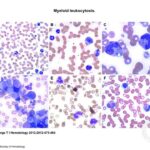Coagulation disorders
Consultations for alterations of the coagulation system are frequent and originate from abnormalities manifested by bleeding or thrombosis and, less frequently, from alterations in coagulation tests detected, for example, in a preoperative analysis.
Thrombosis means the formation of a clot within an artery or a vein in any anatomical location that prevents blood flow to the affected area. It is important to distinguish thromboses that occur in the arterial system or in the venous system. Most arterial thromboses occur in the coronary arteries of the heart and in the arteries that supply the brain. Acute coronary disease and cerebrovascular accidents are an important cause of mortality in the Western world. Its origin is usually due to injury or disease of the artery wall (arteriosclerosis) or also by embolism, as occurs in cerebrovascular accidents.
In general, the most frequent inquiries about thrombosis refer to venous thrombosis. The most frequent location occurs in the venous territory of the lower extremities (deep vein thrombosis) and in the lung (pulmonary thromboembolism). The causes are multiple and the patient’s risk factors and/or diseases are involved. Among the first, age, obesity, immobility after surgery or prolonged plane travel, hormonal treatments and hereditary or acquired genetic circumstances that produce the so-called prothrombotic state stand out. Regarding the latter, the most frequent are traumatological and abdominal surgery and the existence of cancer.
The role of the clinical hematologist is to find out the possible cause in order to advise the means that can prevent a new thrombotic episode from occurring (antithrombotic prophylaxis). He frequently requests a coagulation study aimed at discovering if there is a prothrombotic condition or state (thrombophilia study). This analysis analyzes the existence of inherited genetic mutations and also abnormalities or acquired deficits of the coagulation protein system.
When the consultation is due to hemorrhage, the clinical history, the family history, and the blood count, as in the case of thrombosis, help to guide the problem. Acute low platelet counts, usually immunologic (primary autoimmune thrombocytopenia or ITP), cause pinpoint (petechiae) or extensive (ecchymosis) skin hemorrhages and, rarely, GI bleeding (see Platelet Disorders). The most common hereditary hemorrhagic disease is von Willebrand disease, with a prevalence of 100 cases per million inhabitants. It presents various types, with a predominance of clinically mild forms (cutaneous and mucosal) but sometimes severe, especially in the context of surgery or even after dental extractions.
The diagnosis of a hemorrhagic disease is based on the guided analysis of various coagulation tests that allow establishing the diagnosis and the orientation of the substitutive or pharmacological treatment to prevent the appearance of a new hemorrhagic episode.




